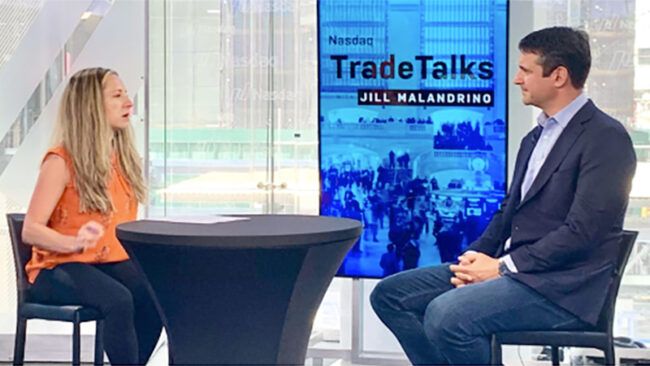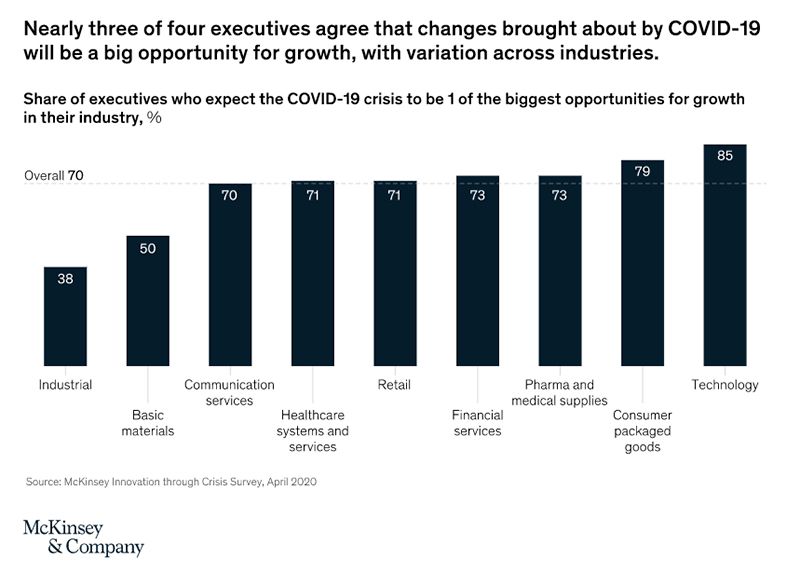Stay connected
Subscribe to our Inside WEX blog and follow us on social media for the insider view on everything WEX, from payments innovation to what it means to be a WEXer.

Jay Dearborn, president of corporate payments at WEX, met recently with Jill Malandrino, global markets reporter at NASDAQ for an edition of NASDAQ trade talks. They met at the market site in Times Square to discuss payments technology – both the current state and a view into the future.
“We are going to take a look at the current payment landscape and talk about how investors are approaching valuations at this point,” opened Malandrino. Dearborn and Malandrino discussed valuation today – a quantitative process of determining the fair value of an asset or a firm – how the pandemic has affected valuation, and the future of the payments space going forward.
The market has seen a shift in 2022 directly tied to price-to-earnings ratio. “It’s tough.” says Dearborn, “We’ve seen valuation across all segments come down over the past six months, but in fintech and payments in particular, it’s come down quite a bit.” Fintech valuations have been inflated over the past couple years, particularly in the area of disruptive finance. “What investors are really looking towards right now within fintech, within payments, are those companies that are at scale.” Investors see that those fintechs that are making money can provide opportunities for consolidation: revenue streams within the payments technology market are providing investment opportunities.
The pandemic has accelerated a number of trends in fintech, and Dearborn shared that throughout COVID two things happened. “One was there was a huge demand for fintech tools particularly in B2B where WEX plays. Things that automate workflow. The other thing that was happening is we printed a lot of money, interest rates were historically low, there was a search for yield, and so you had lots of speculative bets across the board.”
As predicted, the pandemic years have been a time for innovation in many markets, including payments technology. McKinsey conducted a study at the beginning of the pandemic where 85% of technology companies predicted opportunities for growth during COVID, which proved to be a reality for payments fintechs. Dearborn discussed the surge in innovation that happened in the industry over the past couple of years. “When we look back on this time we’ll look at it and say, ‘Wow! We have new products, new services!’” The trick going forward is for fintechs to develop a strategy for monetizing all the new products and services that they have developed during the pandemic.

Dearborn and Malandrino discussed the reliable strength of the payments micro-industry as it continues to grow. “Payments is a good bet in general. It tracks the overall macro-economy, it’s fairly inflation-resistant as most of the business models track to the value of money,” Dearborn said. What has to be achieved for payments fintechs to be viable is scalability. “You don’t make money that hits the bottom line until you’ve gotten to a certain size,” says Dearborn, and that size is fairly large.
Dearborn has no doubt that the field will be consolidated. With valuations dropping, mergers and acquisitions in the industry will become much more viable. “I think the question, going back to this scale point, is are there chassis, established customers, and point solutions that exist that can start to come together and provide a unified experience for customers. At the end of the day this is really what they want.” Change is on the horizon.
According to Dearborn, while fraud is everywhere, in payments technology, fraud and resiliency are table stakes. “None of us really have a business without protecting against resiliency and fraud.” Using WEX as an example, the fintech guarantees 99.99 uptime, which means 53 minutes of unscheduled downtime per year. “When it comes to fraud, WEX is one of the largest virtual card producers in the world and locks down these virtual cards so they can only be used in certain places, at certain times, with certain vendors, and so we have very low incidences of fraud.” Because it is essential as a payments company to manage fraud, and because WEX is a best-in-class organization, the company has found a way to almost entirely eliminate fraud for its corporate payments customers.
The B2C space has evolved considerably in the last five years and that disruption appears to be on the cusp of influencing change in the B2B space going forward. Consumers have become acquainted with payments models like Venmo and the payments landscape at Amazon which has primed them for conversion in the B2B space. “Consumers have become used to interacting with financial tools in a mobile-first way and that’s bleeding over to the B2B space now. Particularly in the down market, for small businesses, owner-operators, office managers, they’re expecting a mobile-first experience. At WEX we’ve invested in this trend.” Earlier this year, WEX launched a new product, WEX Select (formerly known as Flume), which takes all of the best parts of the company’s ecosystem and wraps them in a mobile first, consumer-centric experience. “Really, at the end of the day, WEX Select (formerly known as Flume)is enabling businesses to pay and get paid.”
Figuring out ways to turn cost centers into revenue centers is top of mind for any CFO and they see this as part of their mandate – it’s what is expected of them from their board, investors, and key stakeholders. “We used to think of businesses and particularly the accounts payable/accounts receivable department, as highly laborious. Pushing checks in a weekly check run and lots of clerks running around, but what we do today at WEX is help CFOs digitize that workflow.” Fintechs must translate the bulk of high cost, resource-heavy operations into virtual card functionality and then also put as much as possible on a virtual card. This then generates interchange, and generates rebate, propelling businesses in the right direction toward greater profitability. “For that CFO, what this amounts to is in effect turning what was a cost center into a revenue center for the company.”
While the experience of the past several years has had its share of difficulties, for payments technology what came with the difficulties was an opportunity to innovate and evolve. From Dearborn and Malandrino’s conversation we were able to learn that the next move will be turning those innovations into revenue-generating tools.
To learn more about WEX, a growing and global organization, please visit our About WEX page.
Learn more about how WEX payment solutions can be tailored to your business, so you can accelerate and streamline operations while creating lasting growth and success for your organization.
Resources:
Investopedia
Axios
CNBC
McKinsey & Company
Subscribe to our Inside WEX blog and follow us on social media for the insider view on everything WEX, from payments innovation to what it means to be a WEXer.